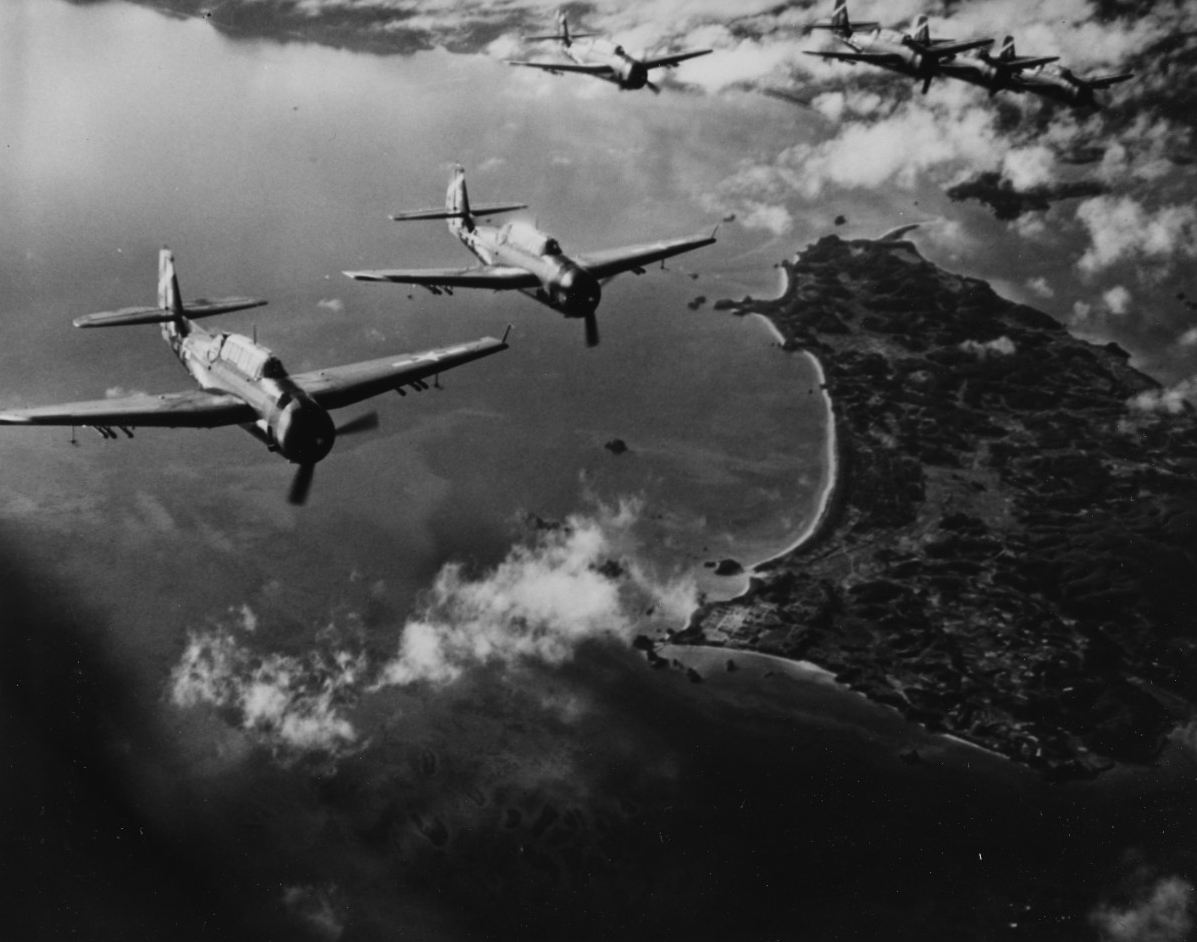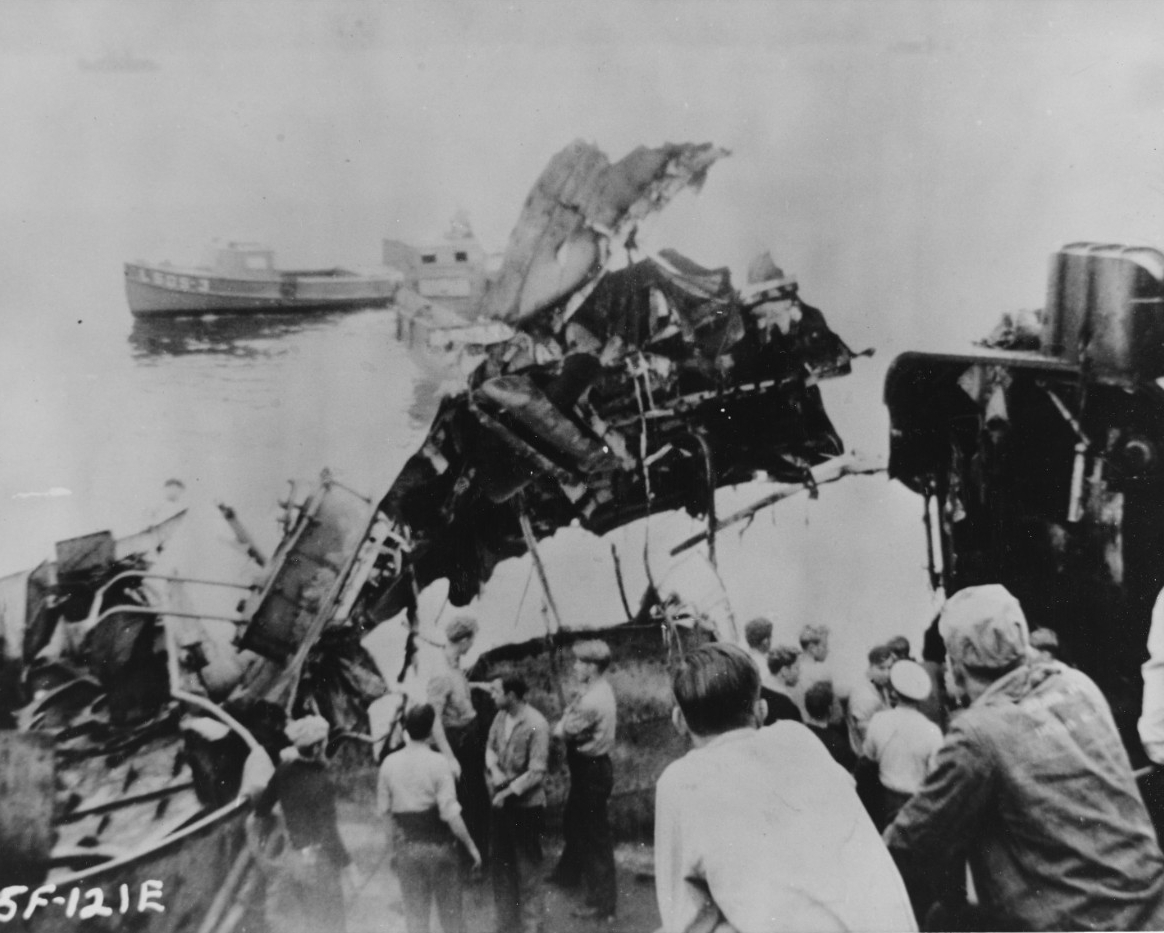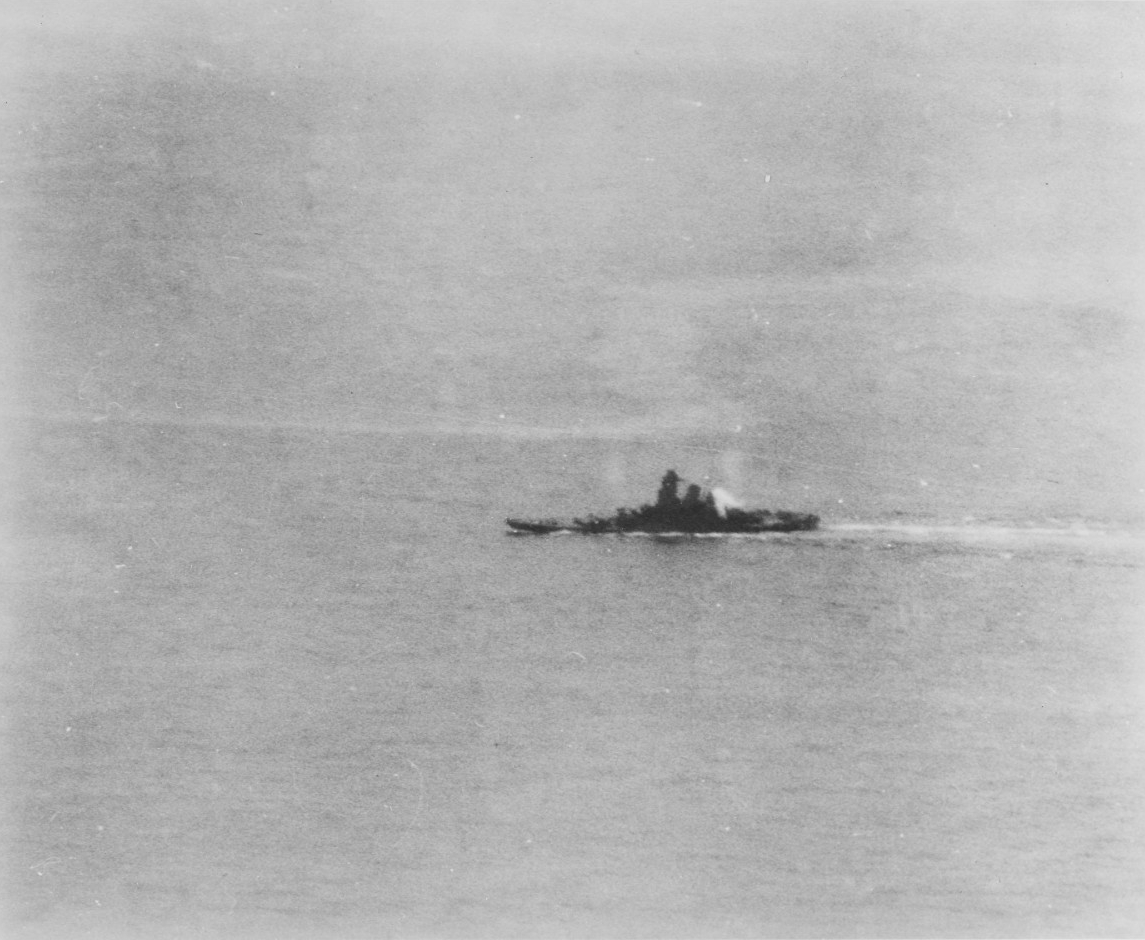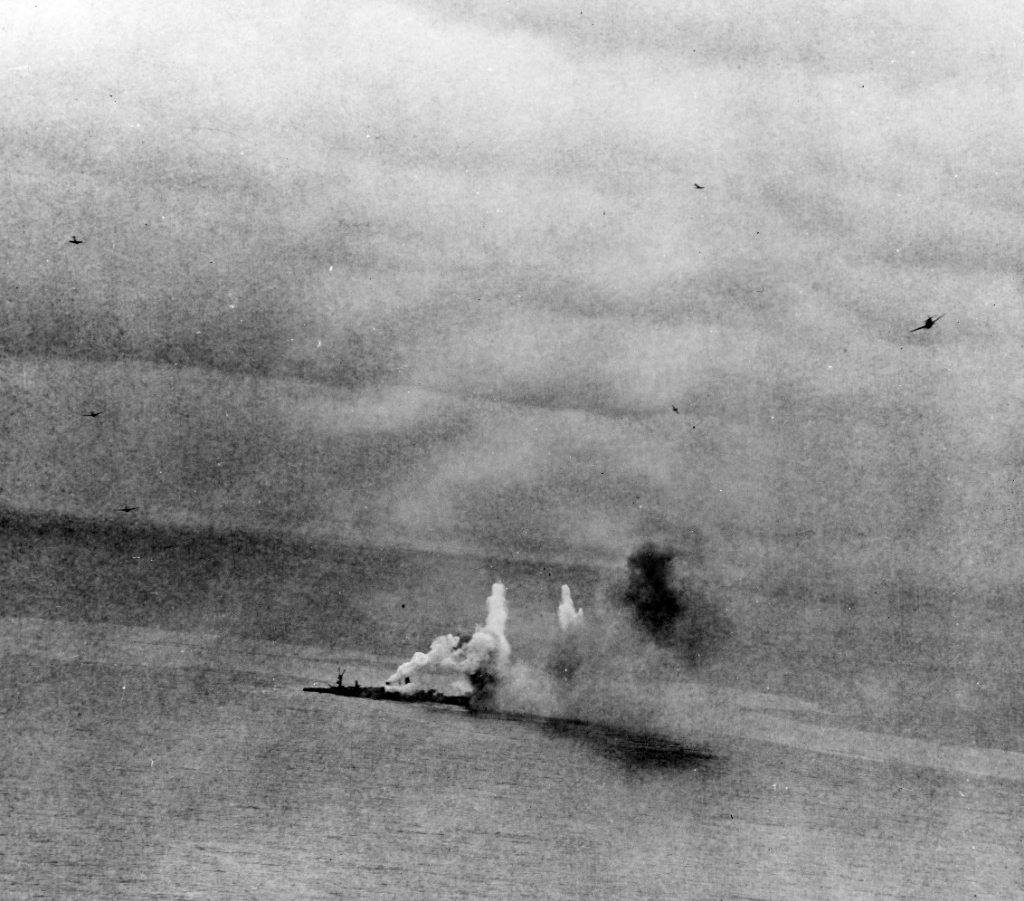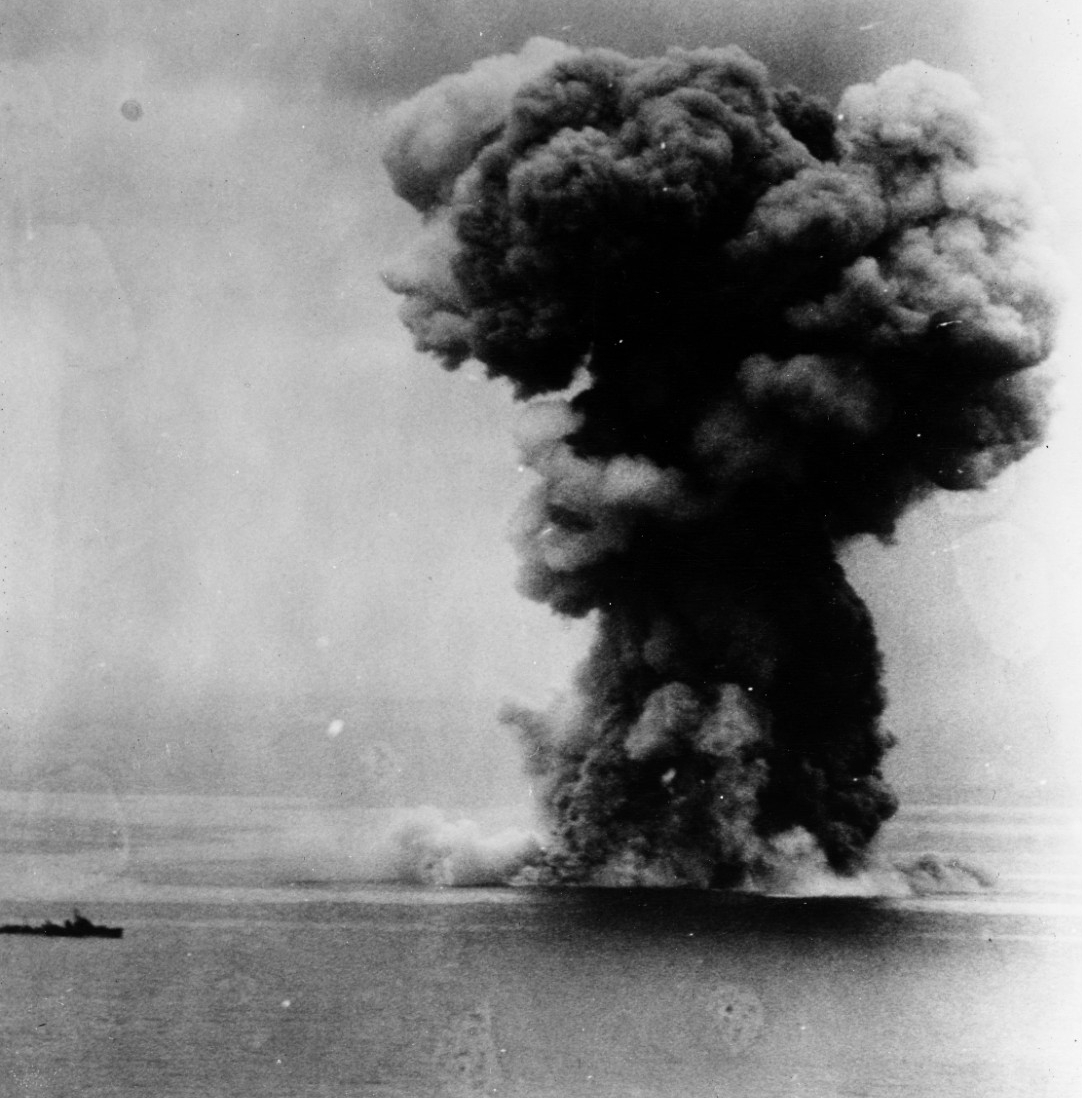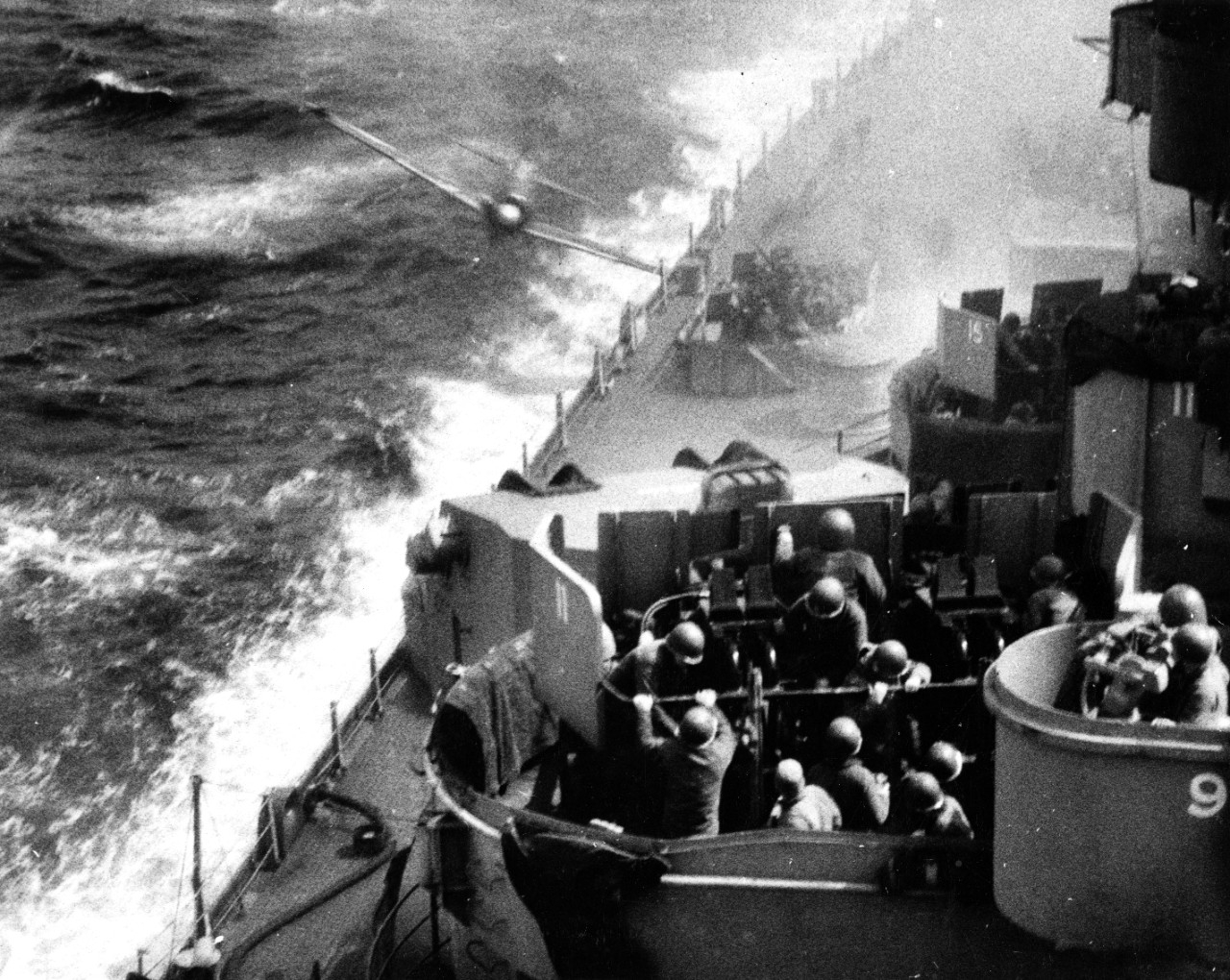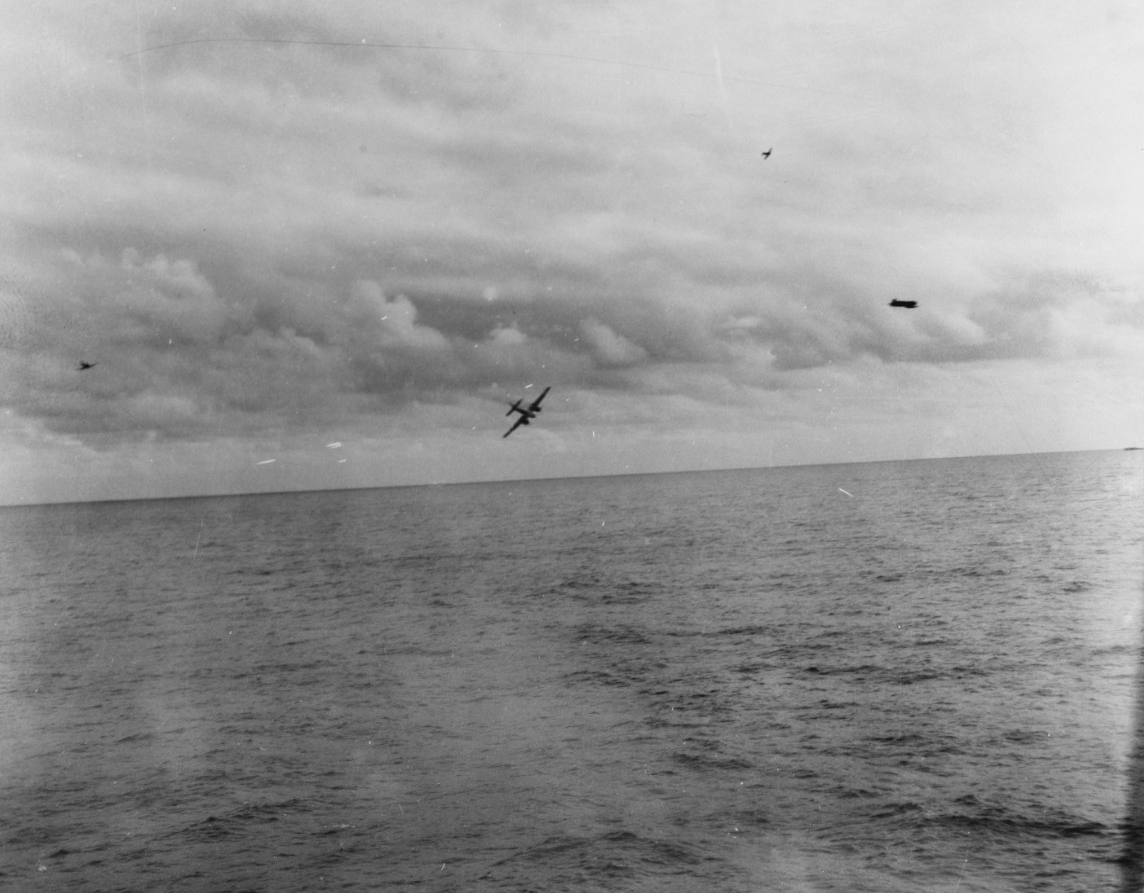Okinawa Highlights: 4-11 April 1945
As the Battle of Okinawa raged ashore on 4 April 1945, landing craft infantry guns vessel LCI(G)-82, performed night picket duty off Nakagusuku Wan (later renamed Buckner Bay). After attempting to pick up a raft carrying three downed airmen from a Japanese bomber, an enemy suicide boat exploded into the hull of LCI(G)-82, causing large holes in her superstructure and fires to break out in two of her fuel tanks. The vessel sank, taking eight crewmembers with her.
Battleship Nevada (BB-36) received damage the following day after taking five rounds from a 6-inch enemy shore battery that killed two men and wounded 17. After returning fire with her 14-inch guns, Nevada silenced the enemy gun and remained on station off Okinawa until 14 April.
The Japanese launched the first of a series of ten mass kamikaze air strikes against the U.S. naval fleet. Operation Kikusui (Floating Chrysanthemum) No. 1 began on 6 April, with more than 700 Japanese aircraft targeting the Allied fleet. Despite carrier aircraft picking off 200 enemy planes and naval gunfire shooting down another 200, some 180 kamikaze pilots managed to get through. With orders to attack the first enemy vessels they encountered, several of the inexperienced pilots attempted to crash into U.S. destroyers serving as radar picket vessels. Destroyer Haynsworth (DD-700) was the first ship struck, while Bush (DD-529), Emmons (DD-457), and Colhoun (DD-801) are sunk. Five suicide aircraft hit destroyers Newcomb (DD-586), with the fifth kamikaze skipping across and battering Leutze (DD-581), coming to the aid of Newcomb. Lt. Leon Grabowsky, Leutze’s acting commanding officer, received the Navy Cross for aiding Newcomb and directing damage control efforts on board his own vessel. Battleship Maryland (BB-46), an amphibious assault vessel, two munitions transports, and ten other destroyers all received heavy damage in the first thoroughly organized kamikaze attack of the battle.
Ten-Go Operation, April 1945. Japanese battleship Yamato listing to port and afire at the after end of her superstructure, but still underway, while under attack by U.S. Navy carrier planes north of Okinawa, 7 April 1945. Photographed from a USS Yorktown (CV-10) plane. Collection of Fleet Admiral Chester W. Nimitz, USN. U.S. Naval History and Heritage Command photograph, NH 62580.
Japanese battleship Yamato blows up, following massive attacks by U.S. Navy carrier planes north of Okinawa, 7 April 1945. An escorting destroyer is at left. Photographed from a USS Yorktown (CV-10) plane. Collection of Fleet Admiral Chester W. Nimitz, USN. U.S. Naval History and Heritage Command photograph, NH 62582.
As part of Operation Ten-Go, battleship Yamato sortied from Tokuyama, Japan, the same day. Her suicidal mission is two-fold: serve as a decoy to draw U.S. carriers into the open for kamikaze strikes, and beach herself on Okinawa to act as a gun platform against U.S. air and land forces. The mission spirals into disaster after submarines Threadfin (SS-410) and Hackleback (SS-295) spotted her task group and radioed back her position to Task Force (TF) 58. On 7 April, U.S. naval aircraft squadrons from several TF 58 fast carriers led by Adm. Marc Mitscher, attacked Yamato and her supporting vessels, including light cruiser Yahagi, and eight supporting destroyers. The highly-skilled American fighter, torpedo bomber, and dive-bomber pilots sank Yahagi, four destroyers, and Yamato, the world’s largest ever battlewagon, sending her to the bottom of the East China Sea with approximately 11 torpedo and six bomb hits.
USS Missouri (BB-63) about to be hit by a Japanese A6M Zero kamikaze, while operating off Okinawa on 11 April 1945. The plane hit the ship's side below the main deck, causing minor damage and no casualties on board the battleship. A 40mm quad gun mount's crew is in action in the lower foreground. Collection of Fleet Admiral Chester W. Nimitz. U.S. Naval History and Heritage Command photograph, NH 62696.
The first kikusui operation ended on 11 April, with suicidal air strikes doing severe damage to carriers Enterprise (CV-6) and Essex (CV-9), as well as battleship Missouri (BB-63). Destroyer Kidd (DD-621), on picket station duty, repelled three separate kamikaze air raids. Later that afternoon, a single enemy aircraft crashed into her, killing 38 men and wounding 55. As Kidd got underway to join her task group, her gunnery crews continued firing at several kamikazes attempting to finish her off. Kidd survived the onslaught, steaming to Ulithi for repairs before returning stateside.
—Guy Nasuti, NHHC historian, April 2020

